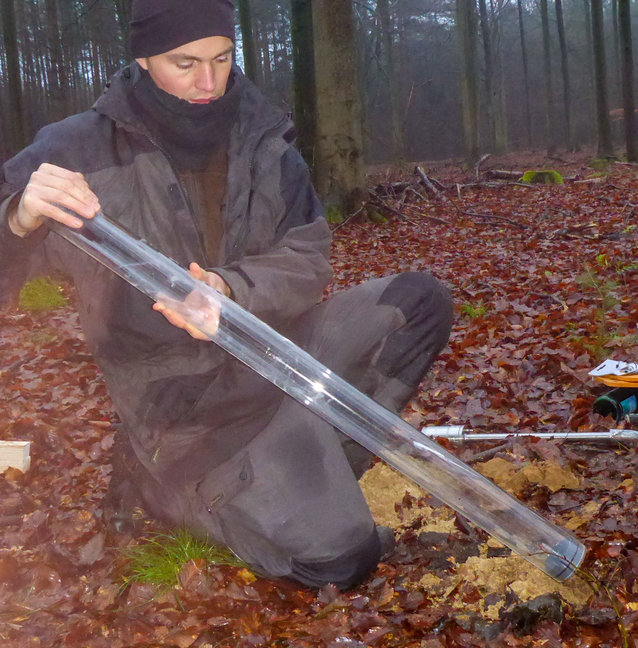Roots
Soils contain over twice as much carbon as is currently present in the atmosphere, and the storage of carbon in soils occurs primarily via plant roots. Thus, 30-95% of plant biomass is located in the root system and the key process of carbon input into the soil, rhizodeposition, accounts for about half of plant biomass production. In addition, plants take up water and nutrients from the soil via their roots and thus play an elementary role in the water, nutrient and carbon cycles. Despite the undisputed importance of roots in global cycles, even basic data such as root length, fine root content, seasonal activity or root growth and turnover rates are difficult to obtain. However, a better understanding of these parameters is essential in a wide range of areas, e.g. in global climate models, in the adaptation to climate change in agriculture and forestry, or for the reduction of climate risks such as landslides, erosion or flooding.
The finest and most short-lived roots are primarily responsible for the above-mentioned aspects, and their dynamics merit closer investigation. For example, the seasonal activity of vegetation (=phenology) influences the global carbon dioxide content of the atmosphere and is essential for estimating the global carbon sink. Above-ground phenology is relatively easy to determine (visually, remote sensing, etc.), but little is known about seasonal differences in plant activity in the root zone. The activity patterns can deviate significantly (up to 50 %) from the above-ground patterns. In addition to the activity phases of root growth, the decay of roots is also of great ecological importance. The lifetime of roots ranges from a few days for root hairs and fine roots to many decades to centuries for coarse supporting roots. Under changing environmental conditions (global change), both the phenology and the life span of roots could shift significantly, which could have implications for the global carbon cycle.
Traditionally, research on roots has been extremely labour-intensive, as they are 'hidden' in the soil. Most common are destructive root biomass surveys by washing-out of soil samples, but only about 60 % of the biomass is surveyed, as the important fine roots are often lost. Furthermore, this method does not allow an insight into root dynamics over time, but provides only a snapshot. By far the most important tool for recording underground plant activity in the field are therefore so-called minirhizotrons. Minirhizotrons are transparent tubes which, once inserted into the soil, allow a permanent observation of root growth on their outside via images from tube scanners or cameras. This observation is non-destructive and can therefore be carried out as often and as long as desired in time, thus enabling precise visualization and measurement of important root parameters (e.g. growth phenology, growth rates, root turnover). So far, however, there is no method available that allows an automatic digitization of the scans or images obtained. This step is currently carried out in an extremely time-consuming and at best semi-automatically, i.e. completely under human supervision. Depending on the number and length of the roots, the processing of a single scan can take several hours. This fact also explains why there are very few highly resolved and long measurement series on root dynamics. Spatial variation is therefore also very poorly investigated. This means that the biggest obstacle to the provision of well-founded, temporally and spatially highly resolved data on root dynamics is the digitization of the images obtained with minirhizotrons. The automation of root length quantification via Artificial Intelligence (DCNNs), which is aimed at here, could remedy this deficiency and thus answer ecological and biogeochemical questions with social relevance.
For the first time, automated digitization could quantify differences in root growth and root life in different ecosystems with high spatial and temporal resolution. This aspect is of fundamental importance for the carbon balance of an ecosystem and is so far not estimated at all or only as a black box in current models, which are subject to the coupled biosphere-atmosphere models of the Intergovernmental Panel on Climate Change (IPCC). Furthermore, a spatio-temporal high-resolution analysis of root growth could promote sustainable agriculture by adjusting fertiliser application to the activity periods of the crops.
The project "DIG-IT!" is funded by the European Social Fund and the Ministry for Education, Science and Culture of the federal state Mecklenburg-Vorpommern.



